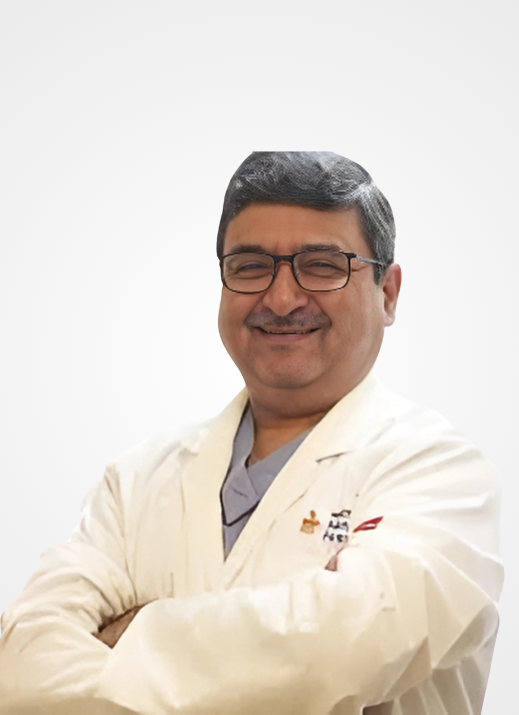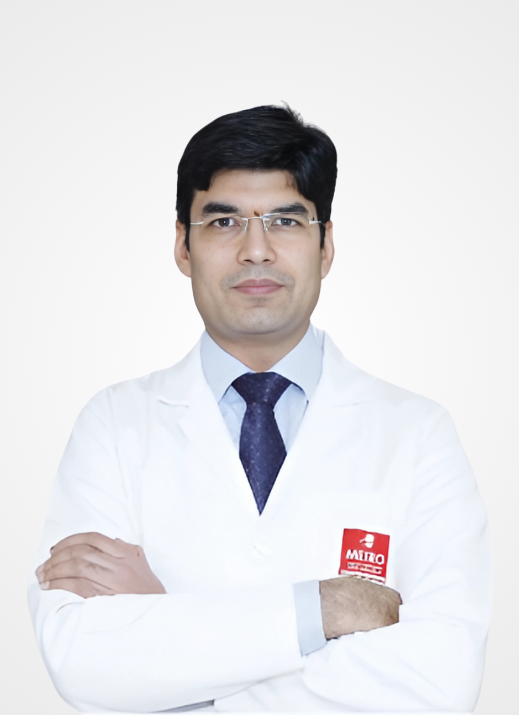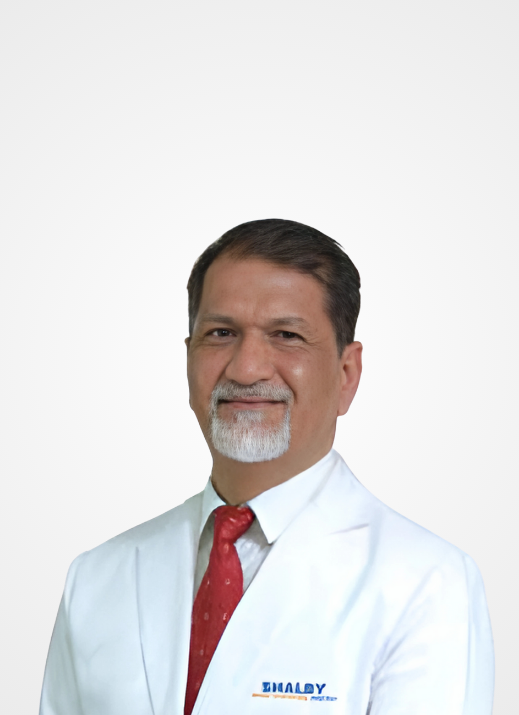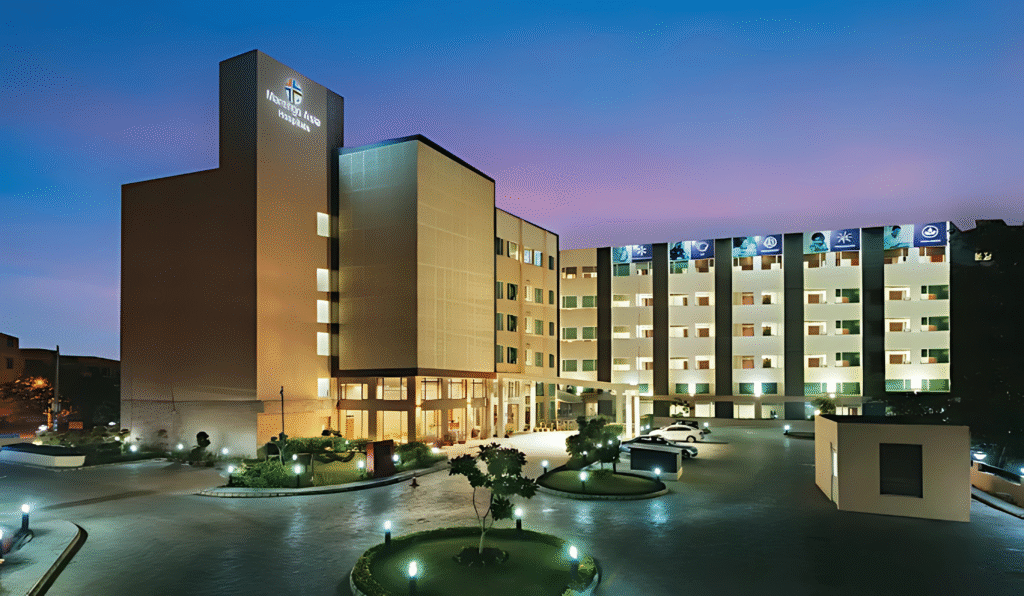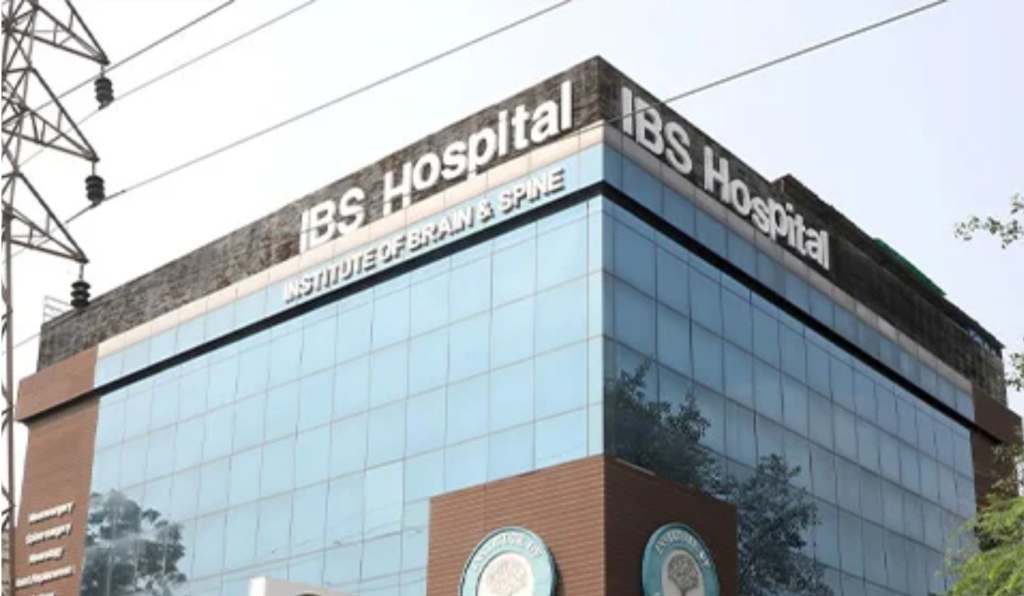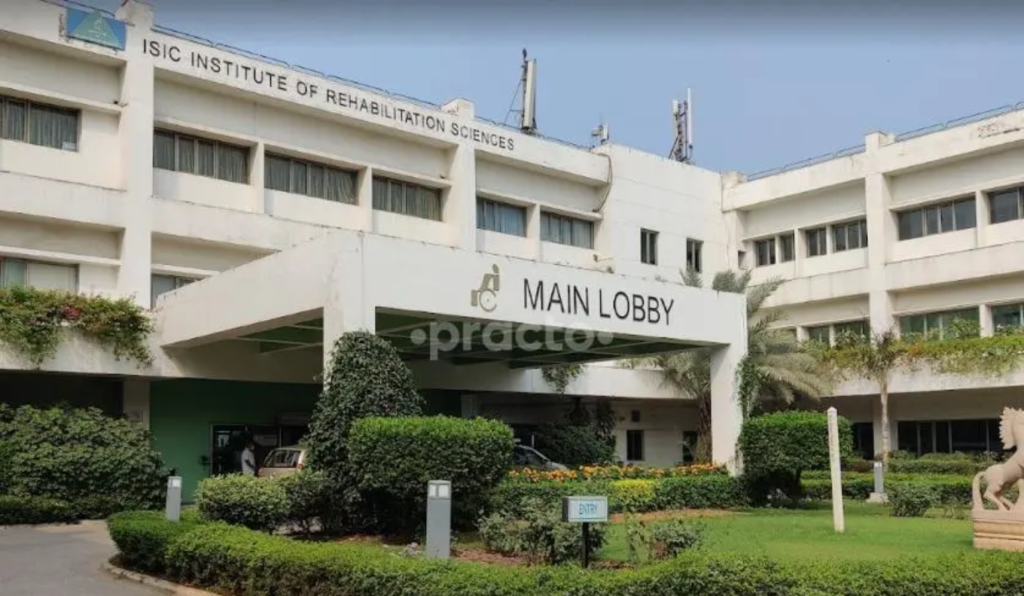Sports Injuries & Ligament Tears Treatment Cost in India

What are Sports Injuries & Ligament Tears?
Sports injuries refer to any musculoskeletal injuries that occur during physical activity or athletic performance. These include ligament tears (such as ACL or MCL injuries), meniscus tears, rotator cuff injuries, tendonitis, and muscle strains.
In addition to acute trauma, chronic overuse injuries like shin splints and stress fractures are also common. Untreated or recurrent injuries can lead to conditions like post-traumatic osteoarthritis, making timely intervention essential for full recovery and joint preservation.
How Do Sports Injuries & Ligament Tears Develop?
Sports injuries and ligament tears develop from acute trauma or repetitive strain, commonly affecting active individuals. Sudden movements, twisting, or direct impact can stretch or tear ligaments—most frequently in the knee, shoulder, or ankle. Ligament tears like ACL injuries, rotator cuff tears, or meniscal tears often happen during high-intensity sports involving pivoting, jumping, or tackling.
Overuse without proper rest or training may cause microtraumas that evolve into significant injuries. Weak muscles, poor conditioning, and incorrect technique further increase the risk. If untreated, these injuries can lead to chronic instability, joint degeneration, or secondary conditions like post-traumatic osteoarthritis.
Causes and Risk Factors of Sports Injuries & Ligament Tears
Sports injuries and ligament tears occur due to acute trauma, overuse, or improper technique during physical activities. While they are common among professional athletes, recreational sports participants, and fitness enthusiasts are equally at risk, especially without proper precautions.
Sudden Impact or Trauma
Many sports injuries are the result of high-impact actions or collisions during play.
- Contact sports like football, hockey, or rugby increase the likelihood of fractures, dislocations, and tears.
- Falls or awkward landings often result in ligament tears, especially in the knees and ankles.
- Reckless movements such as twisting or pivoting can strain tendons or muscles.
Overuse and Poor Training Habits
Repetitive motions or improper training increase wear and tear on the body over time.
- Lack of adequate warm-up or stretching reduces joint flexibility and muscle readiness.
- Overtraining or insufficient rest leads to fatigue, which impairs form and coordination.
- Improper techniques or equipment (like wrong footwear) contribute to poor biomechanics.
Pre-existing Conditions and Environmental Factors
Some individuals are more prone to injury due to inherent or environmental factors.
- Previous injuries (e.g., past ligament tears) raise the risk of re-injury.
- Poor conditioning or muscle imbalance creates uneven stress on joints.
- Slippery surfaces, uneven terrain, or extreme weather conditions increase risk, especially in outdoor sports.
Symptoms of Sports Injuries & Ligament Tears
Sports injuries and ligament tears can manifest differently depending on the type and severity of the injury. While some symptoms appear immediately after the injury, others may develop gradually over time.
Common Symptoms Include:
Sudden Pain or Discomfort
A sharp or aching pain at the site of the injury, which may worsen with movement or pressure.Swelling and Bruising
Inflammation around the affected area is a typical response to trauma, often accompanied by visible discoloration or bruising.Reduced Range of Motion
Injured joints or muscles may become stiff or difficult to move due to pain or internal damage.Instability or Weakness in the Joint
Injuries to ligaments like the ACL or MCL may cause the joint—especially the knee or ankle—to feel unstable or unable to bear weight.Popping or Clicking Sensation
In cases like ligament tears or dislocations, a popping sound may be heard or felt at the time of injury.Numbness or Tingling
Some injuries may affect nearby nerves, leading to tingling, numbness, or a pins-and-needles sensation.Visible Deformity or Inability to Move the Limb
In more severe cases like fractures or dislocations, the limb may look visibly out of place or be immobile.
Prompt diagnosis and treatment are crucial to prevent long-term damage or chronic pain related to untreated sports injuries.
Types of Sports Injuries & Ligament Tears
Sports injuries are typically caused by physical trauma, overuse, or sudden twisting motions during athletic activities. They can affect bones, muscles, tendons, and ligaments, and may range from mild sprains to severe tears requiring surgical intervention. Recognizing the specific type of injury is crucial for deciding the treatment plan—especially in athletes or active individuals aiming for complete recovery and return to sport.
An ACL tear is one of the most common and severe sports-related injuries, usually occurring during activities that involve sudden stops, jumps, or changes in direction—such as football, basketball, or skiing. It results in knee instability, swelling, and difficulty in bearing weight. While minor tears may heal with physical therapy, complete ruptures often require surgical reconstruction, especially in athletes.
A rotator cuff tear involves damage to the group of muscles and tendons stabilizing the shoulder joint. It’s frequently seen in sports like baseball, tennis, or swimming, which require repetitive overhead movements. Symptoms include shoulder pain, weakness, and limited range of motion. Treatment depends on severity—ranging from physiotherapy for partial tears to arthroscopic surgery for full-thickness tears.
Meniscus tears are cartilage injuries in the knee joint, often resulting from twisting motions or direct impact. Common among athletes in contact sports or those involving pivoting movements, it leads to pain, swelling, and joint locking. Depending on the tear’s location and severity, treatment may include rest, physical therapy, or minimally invasive arthroscopic surgery.
Posterior Cruciate Ligament (PCL) Tear – Less common than ACL injuries; caused by direct impact to the knee.
Achilles Tendon Rupture – A sudden snap at the back of the ankle, often during sprinting or jumping.
Labral Tear (Shoulder or Hip) – Common in overhead or rotational sports; leads to joint instability.
Ulnar Collateral Ligament (UCL) Tear – Common in baseball pitchers; often treated with Tommy John surgery.
Sarcomas are extremely rare prostate cancers that originate in the soft tissues of the prostate rather than glandular cells. These include:
Leiomyosarcoma (affecting smooth muscle tissue)
Rhabdomyosarcoma (affecting skeletal muscle tissue)
Which Type of Sports Injury is the Most Dangerous?
Spinal Cord Injuries from Sports Accidents are among the most dangerous. Though relatively rare, these injuries can lead to partial or complete paralysis, depending on the area and severity of the trauma. Such injuries require immediate medical intervention and long-term rehabilitation, often altering an athlete’s life permanently. The impact on mobility, independence, and overall quality of life can be profound.
Why Choose India for Orthopaedic Treatment?
India has emerged as a global hub for advanced orthopaedic care, attracting thousands of international patients each year. With a unique blend of medical excellence, cutting-edge technology, and cost-effective treatment, India offers unmatched advantages for those seeking relief from joint disorders, spinal conditions, fractures, nerve compression syndromes, and more. Whether it’s a complex surgical intervention or conservative therapy, patients receive world-class care tailored to their individual needs. Here’s why India stands out as a preferred destination for orthopaedic treatments.
India is home to some of the most experienced and internationally trained orthopaedic specialists. Many surgeons have trained in top global institutions and bring extensive expertise in managing complex cases—ranging from osteoarthritis and fractures to congenital and developmental bone disorders.
Indian hospitals offer state-of-the-art facilities equipped with cutting-edge imaging, robotic surgery, arthroscopy units, and minimally invasive surgical technologies. Dedicated orthopaedic departments ensure focused treatment for ailments like spinal disorders, ligament tears, and bone density issues.
India offers world-class orthopaedic care at a fraction of the cost compared to Western countries. Treatment plans—including surgery, rehabilitation, physiotherapy, and follow-ups—are bundled into affordable, transparent packages, making high-quality care accessible to international patients.
Unlike many countries where patients face long waiting periods for orthopaedic procedures, India ensures prompt consultations, diagnostics, and surgeries. This significantly reduces disease progression and enhances recovery outcomes.
India is a global leader in medical tourism, offering:
✔ Dedicated international patient coordinators
✔ Medical visa assistance for easy travel
✔ Affordable accommodation & travel support
✔ Multilingual staff, including English-speaking doctors
This ensures a smooth and hassle-free experience for foreign patients traveling to India for treatment.
Indian hospitals emphasize treatment and post-operative rehabilitation. Personalised physical therapy plans, nutritional counseling, and long-term follow-up care help restore mobility and improve overall quality of life after treatment.
Different Types of Treatments for Sports Injuries & Ligament Tears
Sports injuries can range from mild sprains to complex ligament tears, often requiring tailored treatment plans based on the severity and location of the injury. Early intervention is key to reducing long-term damage and promoting full recovery. Treatment options range from conservative therapies to regenerative approaches and help restore function, reduce pain, and prevent re-injury.
How It Works:
This first-line, conservative treatment reduces swelling, inflammation, and pain immediately after injury. It supports the healing of soft tissues and minimizes internal bleeding and bruising.
When It’s Used:
Acute soft tissue injuries like sprains and strains
Ligament and tendon injuries in early stages
Post-injury to reduce inflammation before other treatments
Benefits:
Immediate pain and swelling reduction
Non-invasive and easy to implement at home
Supports tissue healing and prevents complications
How It Works:
Involves customized exercises, manual therapy, and modalities like ultrasound or electrical stimulation to restore strength, flexibility, and function.
When It’s Used:
During post-injury rehabilitation
After surgery to regain mobility
In chronic overuse injuries or tendonitis
Benefits:
Speeds up recovery and prevents stiffness
Reduces chances of re-injury
Improves long-term joint and muscle function
How It Works:
Uses concentrated platelets from the patient’s own blood to promote healing in damaged ligaments, tendons, or muscles by stimulating cellular repair and regeneration.
When It’s Used:
Partial ligament tears and tendon injuries
Chronic joint inflammation or overuse injuries
When conservative therapy doesn’t yield results
Benefits:
Accelerated tissue healing
Minimally invasive with low risk of rejection
Useful for athletes aiming for quicker return to sport
How It Works:
Non-steroidal anti-inflammatory drugs (NSAIDs) reduce pain, inflammation, and fever associated with acute sports injuries and ligament tears.
When It’s Used:
In the acute phase of injury to manage pain
For chronic inflammation like tendonitis or bursitis
As supportive therapy during rehabilitation
Benefits:
Quick and effective pain relief
Controls swelling for better mobility
Facilitates engagement in physiotherapy
Different Procedures for Sports Injuries & Ligament Tears
Surgical procedures for sports injuries are often necessary when conservative treatments fail or in cases of complete tears, joint instability, or structural damage. Modern techniques like arthroscopy and robotic-assisted surgery have improved precision, reduced recovery time, and enhanced outcomes. The right procedure depends on the type of injury, its severity, and the patient’s physical demands.
How It Works:
Minimally invasive technique where small incisions and a camera (arthroscope) are used to visualize and repair damaged ligaments. Specialized instruments help reattach or reconstruct torn fibers.
When It’s Used:
Partial ligament tears (e.g., in ankle or shoulder)
Joint instability following sprains
When conservative treatment doesn’t yield results
Benefits:
Smaller incisions, less scarring
Faster recovery and minimal pain
High precision with real-time joint visualization
How It Works:
The torn Anterior Cruciate Ligament is replaced using a graft (often from the patient’s hamstring or patellar tendon). The graft is secured to restore knee stability and function.
When It’s Used:
Complete ACL tears
Instability affecting sports or daily activities
Athletes aiming to return to high-demand movements
Benefits:
Restores knee strength and mobility
Enables return to sports post-rehabilitation
Long-lasting outcomes with proper rehab
How It Works:
Involves reattaching torn tendons in the shoulder’s rotator cuff to the bone. It may be done arthroscopically or via open surgery, depending on tear size and complexity.
When It’s Used:
Partial or full-thickness rotator cuff tears
Chronic shoulder pain and weakness
Recurrent shoulder dislocations in athletes
Benefits:
Reduces pain and restores shoulder function
Improves range of motion and strength
Enables return to overhead and athletic activities
How It Works:
Damaged or torn meniscus cartilage in the knee is partially or fully removed using arthroscopy. It helps relieve pain and restore smooth joint movement.
When It’s Used:
Irreparable meniscal tears
Persistent knee locking or catching
Pain and swelling despite therapy
Benefits:
Minimally invasive and quick procedure
Fast return to normal activity
Reduces joint irritation and mechanical symptoms
How It Works:
Combines robotic technology with surgeon control to perform precise repairs of joints, ligaments, or tendons. Enhances visualization and movement accuracy during procedures.
When It’s Used:
Complex or multi-ligament injuries
Athletes requiring high precision recovery
When standard arthroscopy may not be sufficient
Benefits:
Highly accurate and consistent results
Minimizes tissue damage and recovery time
Better functional outcomes and return-to-play rates
Other Advanced Procedures and Costs
Advanced procedures provide cutting-edge options for athletes and active individuals dealing with severe or recurring injuries. These interventions offer quicker recovery, regenerative healing, and long-term functional benefits—especially useful for elite performance restoration or chronic cases.
How It Works:
Involves harvesting healthy cartilage cells from the patient, growing them in a lab, and implanting them into the damaged area. These cells regenerate new cartilage tissue in the joint.
When It’s Used:
Focal cartilage defects in the knee
Young, active individuals with high activity demands
Chronic joint pain not responding to other treatments
Benefits:
Regenerates native cartilage, not just repairs
Long-term durability for joint use
Reduces need for future joint replacement
How It Works:
This technique reinforces repaired ligaments with a strong fiber tape (internal brace), which supports healing tissue and adds stability while allowing early mobility.
When It’s Used:
High-grade ligament injuries
Early return-to-sport goals
When standard repair needs extra support
Benefits:
Faster rehabilitation and safer motion
Improved ligament strength and durability
Reduced re-injury risk in athletes
How It Works:
These regenerative therapies use growth factors, stem cells, or biological tissue components to accelerate healing and reduce inflammation in joints, tendons, or ligaments.
When It’s Used:
Chronic tendonitis or ligament strain
Partial tears and overuse injuries
Post-surgical enhancement of healing
Benefits:
Natural healing boost without major surgery
Reduces inflammation and pain
Promotes long-term tissue regeneration
Best Doctors for Sports Injuries & Ligament Tear Treatment in India
Best Hospitals for Sports Injuries & Ligament Tear Treatment in India
Med Travel India Offerings
How does Med Travel India help you?
Med Travel India is dedicated to assisting international patients in accessing high-quality Orthopaedic treatment in India. We ensure a seamless medical journey from selecting the best hospitals to providing logistical support. Our team works closely with top doctors and healthcare facilities to offer personalised treatment plans tailored to each patient’s condition.
We take care of every aspect of medical travel, allowing patients to focus solely on their recovery. Below is a list of services provided by our company:
Services offered by Med Travel India

Seamless Planning for Your Medical Journey
Before you even arrive, we take care of all the groundwork. From connecting you with top specialists to ensuring all necessary medical evaluations are completed, we make your journey stress-free. Our goal is to provide clarity and comfort before your treatment begins.
- Free Medical Consultation
- Personalized Treatment Plan
- Estimated Cost & Duration
- Visa Assistanc
- Second Opinion Service
- Pre-Arrival Coordination
Worry-Free Travel & Comfortable Stay
We ensure that your journey to India is as smooth as possible. From booking your flights to arranging a comfortable stay near your hospital, we handle everything so you can focus on your health.
- Flight Booking Assistance
- Accommodation Booking
- Airport Pickup & Drop
- Language Interpretation Services
- Local Transport Arrangements
- Currency Exchange Support


World-Class Medical Care, Personalized for You
We ensure that your medical treatment is well-organized and efficient. Our team works closely with hospitals to facilitate smooth admissions, consultations, and procedures, ensuring you receive top-quality healthcare.
- Priority Appointment Scheduling
- Direct Hospital Admission
- Specialist Doctor Assignment
- Pharmacy & Medical Supplies
- Hospital Admission & Discharge Support
- 24/7 Customer Assistance
Continued Support for a Speedy Recovery
Your health journey doesn’t end after treatment. We provide post-procedure assistance to ensure a smooth recovery, whether you stay in India for rehabilitation or return home.
- Post-Surgical Care Coordination
- Rehabilitation & Physiotherapy
- Virtual Doctor Consultations
- Diet & Lifestyle Guidance
- Extended Stay Arrangements
- Post-treatment Medical Supplies


Beyond Healthcare, A Comfortable Experience
We offer additional services to make your stay in India comfortable and enriching, ensuring that your well-being is cared for beyond the hospital.
- Medical Insurance Settlement Help
- SIm Card Assistance
- Customized Sightseeing Tours
- Medical Document Assistance
- Personalized Assistance for Family Members
- Concierge Services

